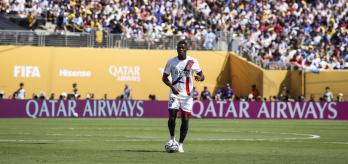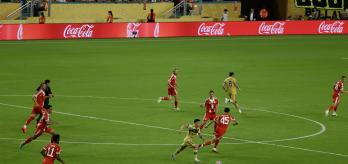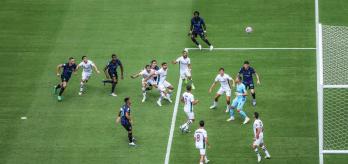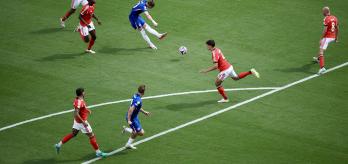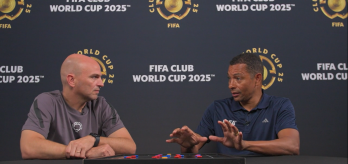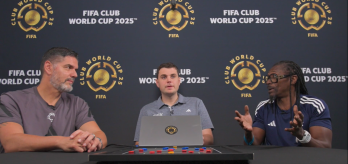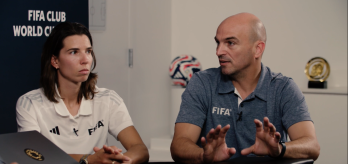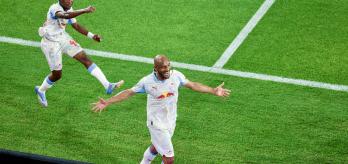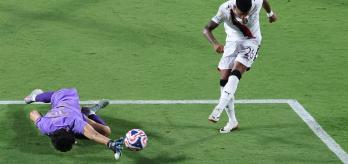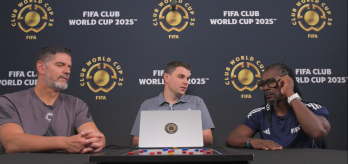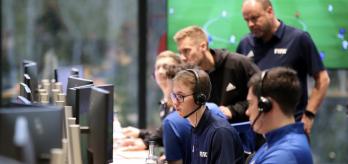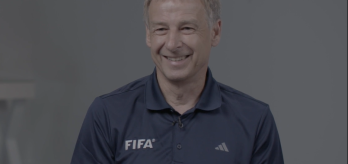After observing all first-round games, the TSG were drawn to two tactical aspects: teams’ offensive balance and their ability to switch the point of attack. Both elements are discussed in the roundtable below, which is hosted by Tom Gardner, Lead of FIFA’s Football Performance Insights team. The TSG experts involved are Esteban Cambiasso, Pascal Zuberbühler, Tobin Heath and Roberto Martínez.
Watch round review
Offensive balance
The first topic identified by the group is how teams achieved “offensive balance”. By this, the group refers to what is also sometimes called “rest defence”, which is how teams organise themselves for defensive purposes during moments when they are in possession and attacking in the opponent’s half of the pitch. Although teams may be comfortably in control of the ball, at the Club World Cup, several participants are structuring themselves in ways that simultaneously mitigate any threat from turnovers and sustain multiple attacks. For Cambiasso, the ability of defensive players to do this is integral to freeing their attacking teammates’ creativity.
“Offensive balance is something you need with your defensive players. They need to put their offensive players in a situation where they are calm to attack. They cannot attack thinking, ‘If I lose the ball, it could be a problem for my team.’ So the players at the back need to think about what can happen if we [attacking team-mates] lose the ball.”
Communication underpins a team’s ability to achieve offensive balance. The positioning of players comprising a rest defence structure requires constant adjustment as the ball circulates around the attacking third. Without communicating, defences cannot adjust accordingly. Martínez stresses there is still room for improvement when it comes to instilling this skill in young players.
“One thing that we don’t do enough in the academies is teach communication…You need to adjust to the opposition and where the ball is going, so communication is essential. You will be amazed how little we create the new players arriving into the first team dressing room with the capacity to communicate, organise and anticipate what could happen in this action. One thing is the tactical concept, and the other thing is how to execute it with communication.”
Switching the point of attack
The way teams were able to redirect their attacks from one area to more advantageous parts of the pitch is another tactical element highlighted by the TSG. When encountering pressure from the opposition, the ability to switch the point of attack becomes increasingly important as teams can simultaneously break the opposition’s press and advance play into attacking areas with fewer opposition players present.
Heath has taken note of this tactical problem-solving ability possessed by the teams at the FIFA Club World Cup. “I think many goals that we’ve seen have come from the success of changing the point of the attack, especially going in, to go back out the opposite side and then having good 1v1 play and rotations on the wide side.” For the two-time FIFA Women’s World Cup™ winner, the way teams redirect attacks from the congested side of the pitch to a full-back on the opposition’s weak side has been especially significant.
“We talk about the height of the full-backs, too, so that they’re moving into the space. We’ve seen a couple of times in the first games where a full-back is already in the space, which slows down this ability [to attack]. To see the full-back move into the space at pace allows for perfect synchronisation.”
Referring to the clip above, Zuberbühler stresses, “The quality of the crosses is also key. It’s the clear DNA of River Plate – how they use the width in this situation correctly. And in the end, it’s actually seven against two in the box, but the quality of the cross and the quality of how he [Facundo Colidio (11)] runs in for the header were fantastic.”







